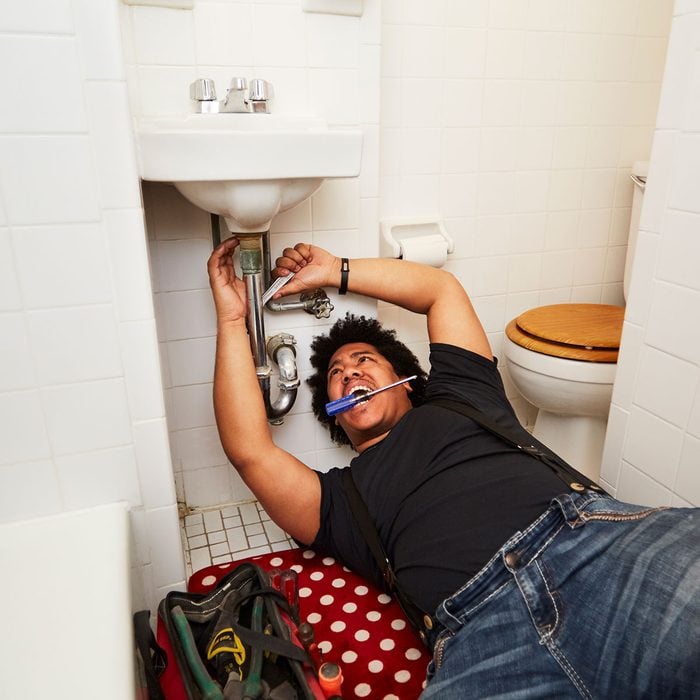A Detailed Overview to Reliable Water Heater Installation for Optimum Performance
Getting started on the task of setting up a water heating system is a venture that requires accuracy and a systematic method for achieving optimal performance. As you continue, the ins and outs of attaching water supply lines and setting up trustworthy electrical or gas connections await, appealing understandings into making sure efficiency and dependability.
Selecting the Right Water Heater

Following, take into consideration the dimension and capacity of the water heater. It's important to evaluate your household's warm water requirements, which can vary based on the number of owners and their usage patterns. A system that's also tiny might result in inadequate warm water, while a large design may lead to unnecessary power intake.
Efficiency ratings also play a crucial duty in selection. Search for water heaters with high Energy Variable (EF) rankings, suggesting exceptional performance and reduced power use. Tankless versions, though normally extra pricey ahead of time, offer significant energy savings with time because of their on-demand heating capabilities.
Preparing the Installation Area
Prior to installing a brand-new water heater, thorough preparation of the setup location is vital. It's essential to gauge the space meticulously to accommodate the water heater's measurements, guaranteeing appropriate clearance around the unit for effective procedure and servicing.
Inspect the flooring for stability, as the water heating unit will certainly need a solid, level surface to operate effectively. If necessary, install a drip pan beneath the unit to capture possible leakages or spills, protecting against water damages to the surrounding location.
In addition, make sure that all needed tools and products get on hand before commencing the installation. This consists of things such as wrenches, screwdrivers, a degree, and any type of extra hardware needed for placing and securing the heater. A well-prepared installment area sets the structure for an effective hot water heater setup, maximizing efficiency and safety.
Connecting Water Lines
When attaching water lines to your newly installed water heating unit, it is important to guarantee that all connections are safe and secure and leak-free to preserve efficient procedure and prevent water damage. Begin by identifying the warm and cold water system lines. The cold water inlet is typically noted with a blue tag or a "C", while the warm water electrical outlet is marked with a red tag or an "H".
Use adaptable hot water heater connectors to facilitate a less complicated setup procedure. These connectors can soak up vibration and permit slight motion, decreasing the threat of leaks. Before connecting the connectors, put a plumber's tape around the threaded ends of the hot water heater's inlet and electrical outlet pipelines - Plumbing Alabaster AL. This tape works as a sealant, avoiding leakages. Thoroughly my site attach the flexible hoses to the particular inlet and electrical outlet, ensuring that they are tight however not over-tightened, which could damage the strings.
Once links are in location, gradually transform on the major water supply valve. Inspect each connection for leakages by aesthetically checking and feeling for wetness. Tighten connections as needed, and guarantee the pressure relief valve is properly installed, protecting against extreme pressure build-up.
Establishing Up Electrical or Gas Connections
Appropriately establishing up the electrical or gas connections for your hot water heater is a crucial step to ensure efficient and safe operation. For electrical hot water heater, start by validating that the electrical circuit works with the heater's voltage and amperage needs. Make certain the power supply is shut off at the circuit breaker to avoid crashes. Attach the electrical wires to the heating system adhering to the maker's electrical wiring diagram. Generally, this includes linking the ground cable to the eco-friendly terminal, and the remaining cords to their matching terminals, securing each with cord nuts.
For gas water heating units, safety and security is paramount. Link the gas line to the water heating unit using a versatile gas adapter, guaranteeing it is effectively threaded and sealed with pipe joint substance or Teflon tape ideal for gas links.
As soon as connections are made, examine for any type of potential leaks. For gas lines, use a soapy water option to the joints; bubbles show a leakage. For electric connections, ascertain that all wiring is protected and effectively shielded, keeping compliance with regional electrical codes.
Adjusting and testing for Efficiency
With the electrical and gas links safely in location, the next step is reviewing the functional effectiveness of your water heating unit. Begin by thoroughly turning on the water supply and making certain there are no leakages at any of the valves or joints.
Following, do a detailed assessment to guarantee the home heating elements or burner are functioning appropriately. For electrical heating units, utilize a multimeter to validate if the aspects are drawing the suitable current. In gas versions, observe the burner flame; it must be blue and stable, showing effective burning.
Change the settings as needed to eliminate inefficiencies. Take into consideration carrying out insulation steps, such as including a water heating unit covering, to additionally enhance performance by decreasing warmth loss. Furthermore, click this link check the anode pole's condition, as a deteriorated pole can reduce effectiveness and bring about find out here now container deterioration.
Final Thought
Effective water heater setup is critical for guaranteeing optimum performance and energy savings. Securely connecting water supply lines and thoroughly setting up electrical or gas connections lessen possible issues.

Properly setting up the electric or gas links for your water heating unit is a crucial step to ensure risk-free and effective procedure. For electrical water heating systems, begin by validating that the electric circuit is suitable with the heating system's voltage and amperage demands. Link the gas line to the water heating unit utilizing a versatile gas port, ensuring it is appropriately threaded and secured with pipe joint compound or Teflon tape suitable for gas links.
Comments on “Trusted Plumbing Services Alabaster AL for All Your Repair works”